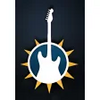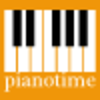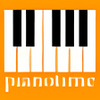Software that helps artists identify different sounds for multiple stringed instruments
Software that helps artists identify different sounds for multiple stringed instruments
Vote: (5 votes)
Program license: Trial version
Developer: pluck-n-play
Version: 1.3
Works under: Windows
Vote:
Program license
(5 votes)
Trial version
Developer
Version
pluck-n-play
1.3
Works under:
Windows
Pros
- Supports a wide range of string instruments
- Generic algorithms for limitless tuning possibilities
- Visual representations on fretboards, keyboards, and music notation
- Export features for sharing and creating musical materials
- User-friendly interface for versatile levels of expertise
Cons
- May be overwhelming for complete beginners in music theory
- Limited features for non-string instruments
Comprehensive Music Theoretical Tool for String Instruments
The Chord Scale Generator is an educational and reference software designed for musicians, particularly players of string instruments. It encompasses a suite of features tailored for exploring, learning, and teaching chords and scales.
Diverse Functionality
The core functionalities of the Chord Scale Generator are its chord generator, scale finder, and chord finder. It extends beyond the limits of pre-stored databases by using generic algorithms, providing musicians with expansive and accurate calculations for any tuning system or stringed instrument. It supports various instruments, ranging from common ones like the guitar and ukulele to exotic ones like the charango.
Graphical Representations and Customization Options
One of the key strengths of the Chord Scale Generator is its graphical visualization. Every result, be it a chord or a scale, can be displayed on a fretboard or a keyboard, and also in standard musical notation, tablatures, and chord charts. This visual approach aids in better understanding and memorization of musical concepts.
Customization is another strong point; the software offers settings for left-handed players and accommodates various playing styles. Whether you are a lefty or righty, the Chord Scale Generator adjusts its output to suit your needs.
Export and Sharing Capabilities
For creators and educators, the utility of this tool is further enhanced by its export features. Graphics can be easily exported to other applications, as image files or through the clipboard, which facilitates the creation of personalized teaching materials, such as custom scale and chord books.
Intended Audience
Whether you are a beginner seeking to comprehend the basics of chords and scales, or a professional looking to delve deeper into complex arrangements, the Chord Scale Generator serves as a valuable resource. It democratizes learning by providing a singular platform where musicians at various skill levels can enhance their understanding of music theory as applied to their instruments.
Overall Performance
The Chord Scale Generator performs well on various Windows operating systems, with its algorithms ensuring swift and precise computations. The interface, although packed with features, is intuitive enough for users to navigate without extensive technical know-how. Regular updates and a responsive support system reflect the commitment to maintaining its relevance and addressing users' needs.
In conclusion, the Chord Scale Generator stands out as a versatile and comprehensive tool for string instrumentalists keen on conceptualizing and applying music theory to their craft. The combination of its in-depth functionality and user-friendly interface makes it an essential software for musicians and educators alike.
Pros
- Supports a wide range of string instruments
- Generic algorithms for limitless tuning possibilities
- Visual representations on fretboards, keyboards, and music notation
- Export features for sharing and creating musical materials
- User-friendly interface for versatile levels of expertise
Cons
- May be overwhelming for complete beginners in music theory
- Limited features for non-string instruments




